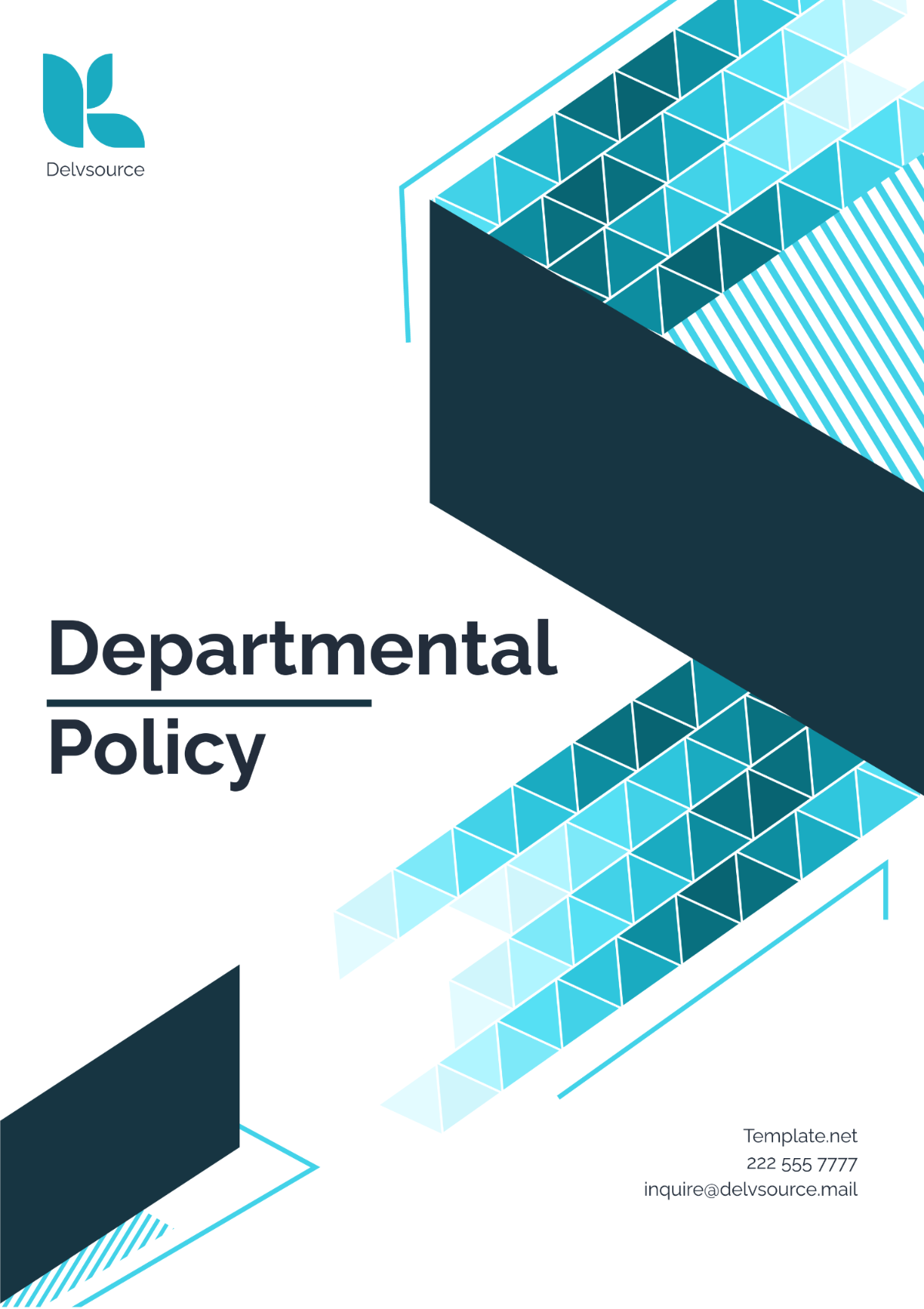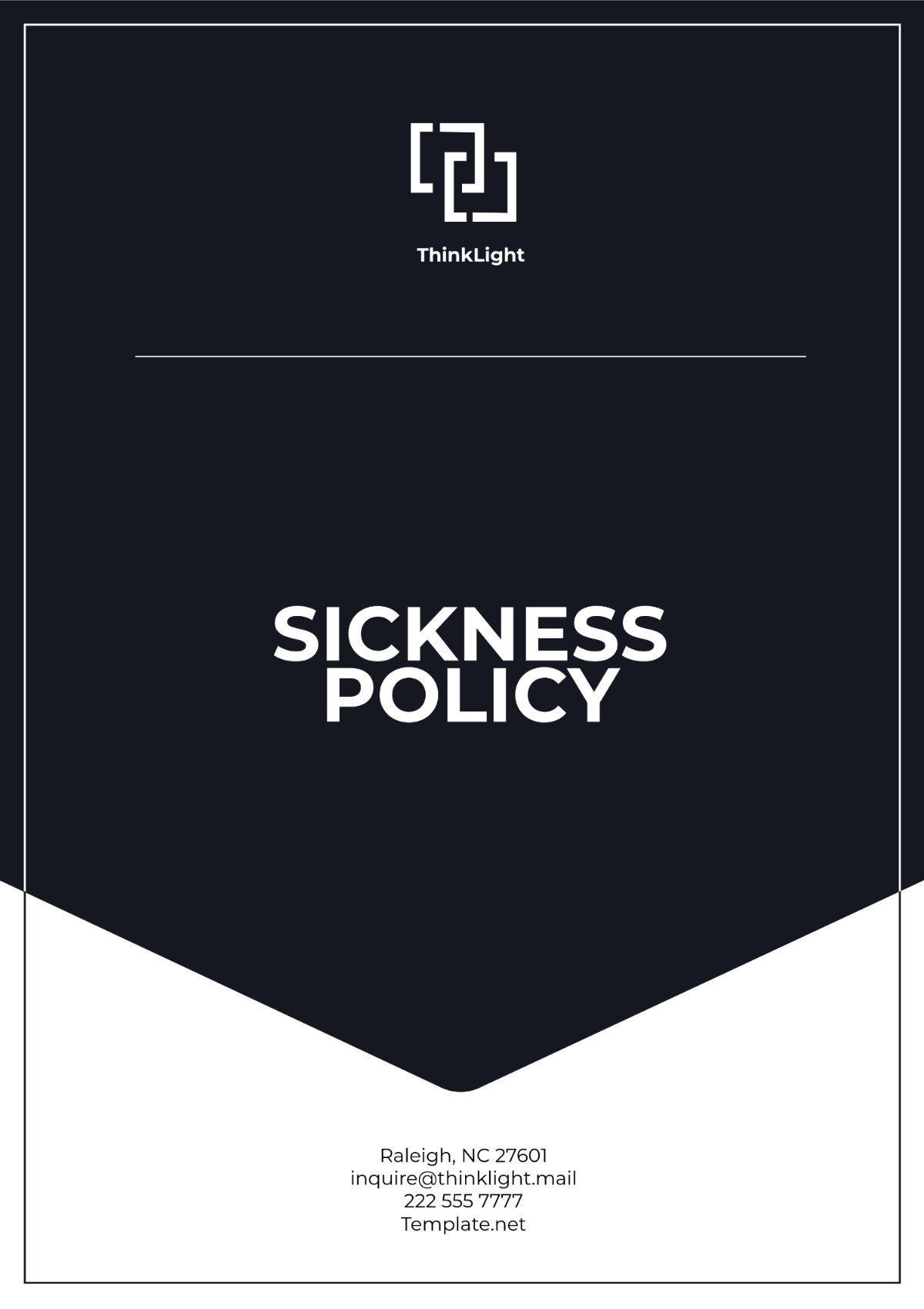Free Telecommunication Policy

- 100% Customizable, free editor
- Access 1 Million+ Templates, photo’s & graphics
- Download or share as a template
- Click and replace photos, graphics, text, backgrounds
- Resize, crop, AI write & more
- Access advanced editor
Streamline your business communications with the Telecommunication Policy Template from Template.net. This fully editable and customizable document is designed to meet your organization’s unique needs. Effortlessly create a professional policy using the powerful AI Editor Tool, ensuring compliance and efficiency. Perfect for businesses of any size, it’s your ultimate solution for clear telecommunication guidelines.
You may also like
- HR Policy
- Restaurant Policy
- Company Policy
- Accounting Policies and Procedures
- Website Policy
- Privacy Policy
- Safety Policy
- School Policy
- IT and Software Policy
- Law Firm Policy
- Construction Policy
- Interior Design Policy
- Travel Agency Policy
- Education Academic Policy
- Security Policy
- Real Estate Policy
- Expense Policy
- Software Policy
Telecommunication Policy
I. Purpose and Scope
A. Purpose of the Policy
The purpose of [Your Company Name]'s policy is to establish guidelines for the appropriate use of telecommunication systems within the organization. It aims to ensure secure and efficient communication while protecting company resources. By adhering to this policy, employees contribute to a productive and compliant workplace.
B. Scope of Coverage
This policy applies to all employees, contractors, and third-party vendors using the company’s telecommunication resources. It encompasses all devices and platforms, including phones, email, video conferencing tools, and internet access. Both company-owned and personal devices used for work-related purposes are included under this policy.
C. Policy Objectives
The key objectives of this policy are to enhance operational efficiency, protect sensitive information, and ensure compliance with relevant laws. It also seeks to minimize misuse and overuse of telecommunication resources. Additionally, it fosters a professional communication environment within the organization.
II. Definitions
A. Telecommunication Systems
Telecommunication systems refer to the tools and platforms used for transmitting information, such as phones, VoIP systems, and video conferencing software. These also include mobile devices, fax machines, and cloud-based communication platforms. The term extends to internal and external communication channels.
B. Acceptable Use
Acceptable use is defined as utilizing telecommunication resources strictly for business-related purposes, as permitted under this policy. Employees may use these systems for personal matters within reasonable limits, provided it does not disrupt business operations. All usage must adhere to organizational standards of professionalism and legality.
C. Prohibited Use
Prohibited use refers to activities that violate company policy, laws, or ethical standards, such as sharing sensitive data with unauthorized individuals. This includes using telecommunication systems for illegal downloads, harassment, or accessing offensive content. Engaging in activities that could compromise the security or reputation of the organization is strictly forbidden.
III. Roles and Responsibilities
A. Management
Management is responsible for ensuring that all employees are informed about the telecommunication policy. The individuals in leadership positions must demonstrate exemplary behavior and set a positive example for others to follow, while also ensuring that they furnish all the necessary resources and support needed to achieve compliance. Additionally, it is part of their responsibilities to consistently review and assess the effectiveness of existing policies, making sure to address any violations or instances of non-compliance that may arise.
B. IT Department
The IT department is tasked with implementing and maintaining secure telecommunication systems. This encompasses activities such as monitoring the usage of the network, updating and maintaining security protocols, and providing technical support to users. Additionally, they have a significant responsibility in training employees to adhere to secure communication practices.
C. Employees
Employees must use telecommunication resources responsibly and in accordance with this policy. All individuals are obligated to report any suspected violations or misuse of company guidelines or resources to their respective supervisors. Should they fail to adhere to this policy, they may face disciplinary actions as a consequence.
D. Third-Party Vendors
Third-party vendors must adhere to the telecommunication policy when accessing company systems. All individuals or entities involved are required to sign confidentiality agreements and are permitted to use the systems solely for purposes that have been explicitly authorized. Additionally, the organization maintains the right to conduct periodic audits to ensure that vendors are in compliance with these requirements.
IV. Acceptable Use Guidelines
A. Professional Communication Standards
All communication through telecommunication systems must reflect professionalism and align with company values. Employees are encouraged to refrain from using informal language when engaging in official communications. It is important to consistently uphold a standard of communication that is clear, concise, and respectful, thereby ensuring that all interactions are conducted with professionalism and consideration.
B. Personal Use Parameters
Personal use of telecommunication systems should be minimal and not interfere with work responsibilities. For example, employees may make brief personal calls or use the internet for essential tasks during breaks. Excessive or disruptive personal use is prohibited.
C. Use of Company-Owned Devices
Company-owned devices should primarily be used for business-related activities. Employees are responsible for safeguarding these devices against theft or damage. In case of loss or malfunction, employees must report it immediately to the IT department.
V. Prohibited Use
A. Activities that Violate Laws or Regulations
Employees must not use telecommunication resources for activities that breach local, national, or international laws. This includes illegal downloads, fraud, or spreading malicious software. Engaging in such activities will result in immediate disciplinary action, including termination.
B. Misuse of Resources
Misuse of resources, such as sending spam emails or overloading the network with non-business-related activities, is prohibited. Employees should refrain from excessive data usage for personal entertainment during work hours. Violations may lead to restricted access or other penalties.
C. Unauthorized Access or Sharing of Data
Sharing login credentials or accessing systems without proper authorization is strictly forbidden. Employees must handle confidential information with care and ensure it is not exposed to unauthorized individuals. Any suspected data breach must be reported immediately.
VI. Security and Data Protection
A. Data Encryption Standards
All sensitive data transmitted via telecommunication systems must be encrypted to prevent unauthorized access. Encryption protocols, including Secure Sockets Layer (SSL) and Transport Layer Security (TLS), ought to be utilized for the purpose of securing emails and the transfer of files. It is essential for employees to verify the security measures and reliability of third-party platforms before they proceed to use these platforms for any form of communication.
B. Secure Access and Authentication
Employees must use strong, unique passwords for telecommunication systems and change them regularly. Accessing critical systems now requires the use of multi-factor authentication, which is an essential security measure. The Information Technology department will be responsible for monitoring and enforcing these secure access protocols to ensure compliance and protect the system's integrity.
C. Protection Against Cyber Threats
Employees are strictly prohibited from engaging in the action of clicking on any links that appear to be suspicious in nature or from downloading any attachments that have not been verified for safety and authenticity. All company devices must have up-to-date antivirus software, and users must attend regular cybersecurity training to recognize phishing and other threats.
Example of Suspicious Email Indicators
Indicator | Description |
|---|---|
Unknown Sender | Email from an unfamiliar address. |
Urgent or Unusual Request | Pressures recipient for action. |
Poor Grammar/Spelling | Contains obvious errors. |
VII. Monitoring and Compliance
A. Monitoring of Telecommunication Use
The organization reserves the right to monitor telecommunication usage to ensure policy compliance. Monitoring activities will be carried out in a manner that adheres to ethical standards and complies with all applicable laws and regulations. At the time of their onboarding, employees will be informed about the monitoring practices that are in place.
B. Privacy Considerations
The organization respects employee privacy and ensures that monitoring is not invasive. Access to telecommunication records will be granted exclusively to personnel who have been officially authorized. The monitoring will concentrate solely on activities that are related to work and on issues concerning compliance.
C. Reporting Non-Compliance
Any violations of this policy should be reported to the immediate supervisor or the HR department. If necessary, a secure communication channel will be made available for individuals who wish to report issues anonymously. Any investigations carried out regarding instances of non-compliance will be handled with strict confidentiality.
VIII. Device Management
A. Company-Owned Devices
Employees using company-owned devices must handle them responsibly and follow guidelines for proper usage. Devices must only be used for approved business activities unless specified otherwise. If a device is lost, damaged, or stolen, employees are required to report the incident within 24 hours.
B. Bring Your Own Device (BYOD) Policy
Employees using personal devices for work must adhere to security protocols, including installing approved software and enabling remote-wipe capabilities. BYOD users must not store sensitive company data on unsecured devices. The organization reserves the right to audit BYOD devices for compliance with the policy.
C. Maintenance, Updates, and Disposal
All company-owned devices must undergo regular maintenance and software updates managed by the IT department. Employees should not attempt unauthorized repairs or modifications. At the end of the device's lifecycle, secure disposal procedures, such as data wiping, will be followed to prevent data leaks.
IX. Incident Reporting and Response
A. Reporting Telecommunication Issues
Employees must report any technical issues, such as service outages or device malfunctions, to the IT helpdesk immediately. Reports should include a detailed description of the issue to facilitate prompt resolution. A ticketing system will be used to track the status of reported incidents.
B. Responding to Security Breaches
In the event of a suspected security breach, employees should disconnect the affected device from the network and notify the IT department. A team specialized in providing swift responses will thoroughly evaluate the situation at hand and implement appropriate corrective measures. It is imperative that all employees fully cooperate throughout the entirety of the investigation process.
C. Escalation Procedures
Critical incidents that impact operations will be escalated to senior management. The Information Technology department will furnish a comprehensive report concerning the incident, which will encompass an analysis of its impact as well as a description of the proposed measures for mitigation. Cases that have been escalated will receive priority treatment to ensure they are resolved as quickly as possible.
X. Policy Enforcement
A. Disciplinary Actions for Non-Compliance
Non-compliance with this policy will result in disciplinary actions, which may include written warnings, suspension, or termination of employment. Severity of the action will depend on the nature of the violation. Repeated or severe breaches, such as illegal activities, will result in immediate termination.
B. Appeal Process
Employees have the right to appeal disciplinary actions if they believe the decision was unjust. Individuals who wish to appeal must submit their requests in a written format directed to the Human Resources department. This submission should occur within ten business days following the receipt of the disciplinary notice. Once the appeal has been received, a review committee will assess the appeal thoroughly and eventually offer a conclusive decision on the matter.
C. Record-Keeping
All incidents of non-compliance and corresponding disciplinary actions will be documented. All records will be securely stored within the human resources system to ensure their confidentiality. These records are preserved to be utilized as a reference in instances such as performance evaluations or legal proceedings.
XI. Training and Awareness
A. Employee Training Programs
All employees will undergo mandatory training on telecommunication policies and best practices during onboarding. Annual refresher sessions will be conducted to address updates in the policy or emerging threats. Training materials will include real-world scenarios and quizzes to enhance understanding.
B. Regular Updates and Communication
Policy updates will be communicated through official channels, such as email announcements and team meetings. Employees are encouraged to review updates and seek clarification if needed. The IT and HR departments will collaborate to ensure smooth communication of changes.
C. Resources for Employees
A dedicated intranet page will host all relevant documents, FAQs, and tutorials related to the telecommunication policy. Employees can also access the IT helpdesk for additional support. Informational posters and guides will be distributed periodically to reinforce key policy points.
XII. Policy Review and Updates
A. Frequency of Policy Review
The telecommunication policy will be reviewed annually to ensure relevance and effectiveness. Additional reviews may occur in response to regulatory changes or technological advancements. A review committee, including representatives from IT, HR, and Legal, will oversee the process.
B. Process for Updating the Policy
Proposed updates will be drafted by the review committee and presented to senior management for approval. Once approved, updated policies will be communicated to all employees. Employees will be required to acknowledge receipt and understanding of the revised policy.
C. Version Control
Each version of the policy will be assigned a unique version number and effective date. A log of changes will be maintained for reference, documenting the nature of each update. Employees can access previous versions upon request for review purposes.
XIII. Acknowledgment and Agreement
A. Employee Acknowledgment Form
All employees must sign an acknowledgment form confirming they have read and understood the telecommunication policy. The form will be collected during onboarding and filed in the employee’s HR record. Digital acknowledgment may also be used for convenience.
B. Agreement to Adhere to the Policy
By signing the acknowledgment form, employees agree to comply with all terms and conditions outlined in the telecommunication policy. Failure to adhere to the policy may result in disciplinary action, as described in Section X. Employees are encouraged to seek clarification on any policy provisions before signing.





























